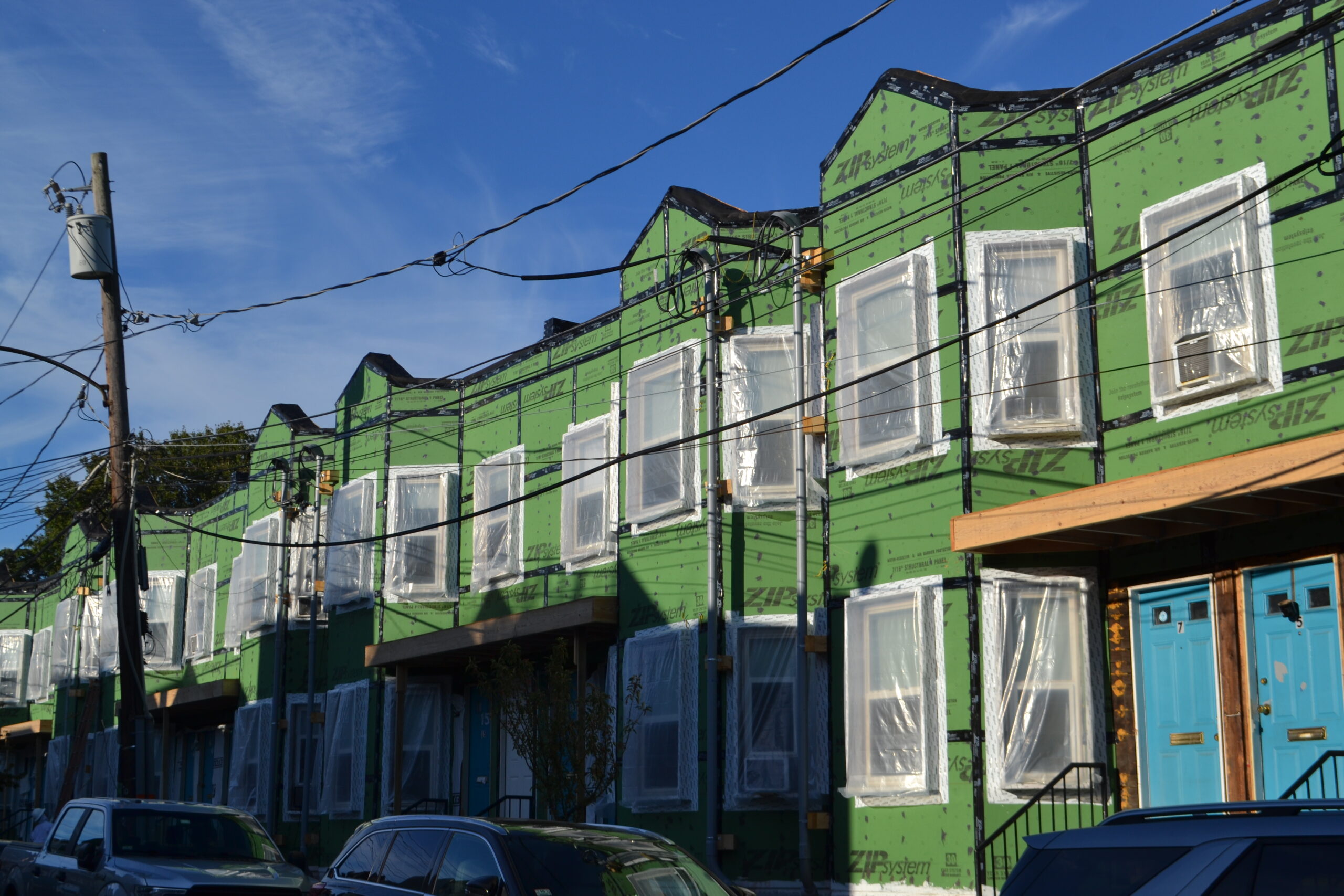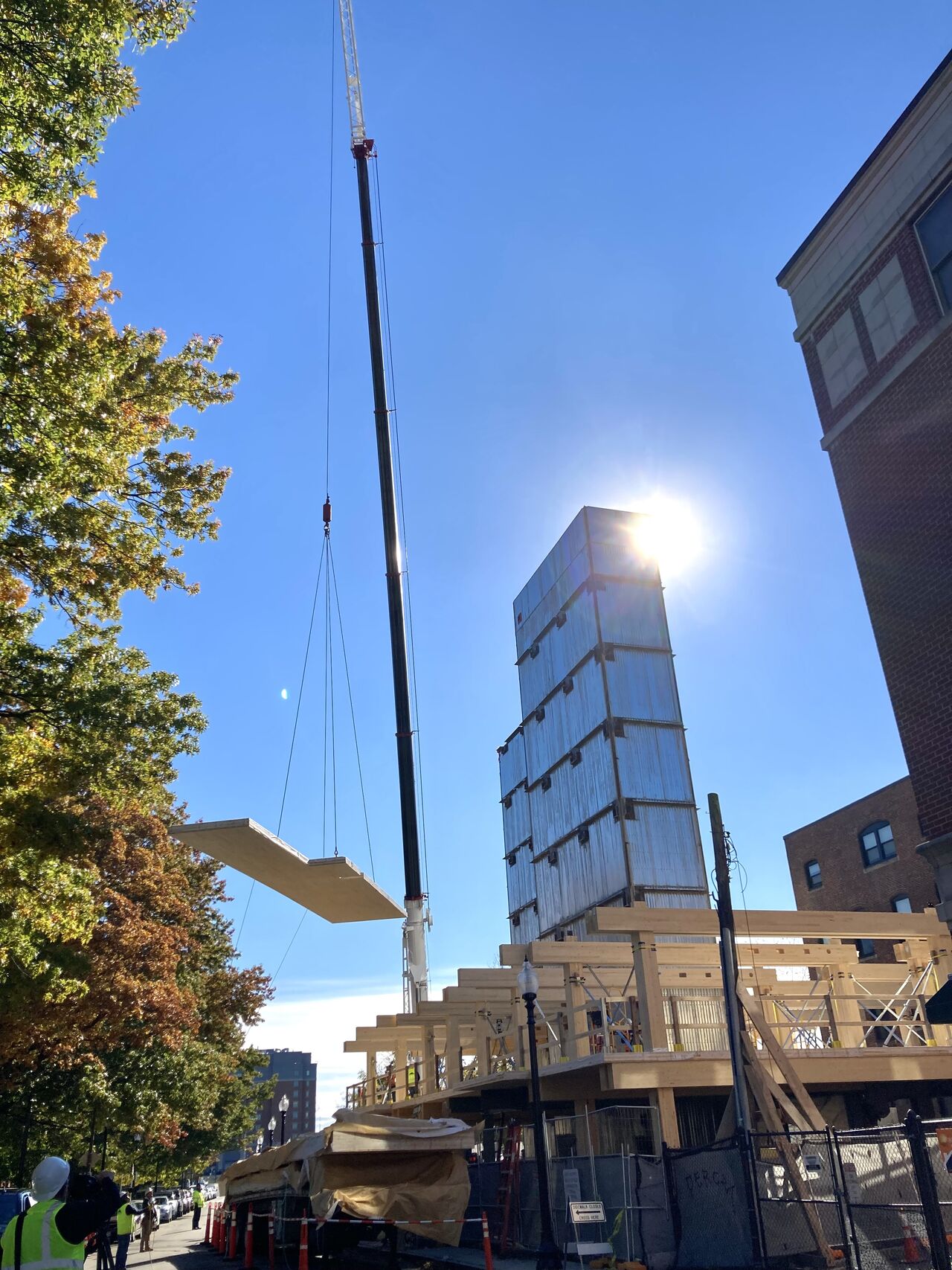Haycon’s Sustainable Building Evolution
Haycon’s journey toward sustainability began with Generation 1 projects, which focused on permitting, scheduling, and cost-efficiency. These projects aimed to eliminate unnecessary costs and ensure high-quality, timely completions, establishing a strong industry reputation.
Transitioning to Generation 2, Haycon leveraged new technologies and advanced building techniques to enhance energy efficiency. A key strategy was adopting the Passive House Institute US (PHIUS) certification, ensuring rigorous standards for energy efficiency and indoor air quality.
Commitment to Reducing Carbon Footprint
Haycon addresses both embodied and operational carbon footprints. Embodied carbon refers to emissions from material production, transportation, and installation, while operational carbon relates to emissions from building use. Haycon’s approach includes using innovative materials like Cross-Laminated Timber (CLT) and Mass Timber, which offer significant carbon savings and incorporate energy-efficient features aiming for Net Zero energy consumption.
The 11 E. Lenox Street Project
Patrick Haydon highlighted Haycon’s 11 E. Lenox Street project in Boston, a 7-story, mixed-use, multifamily building showcasing sustainable construction practices.
Unique Structure and Materials
The building features a unique structure without a podium, utilizing CLT and Mass Timber. CLT offers strength, versatility, and sustainability, contributing to faster construction and less waste compared to traditional methods.
Financial and Environmental Benefits
The project cost $14 million, with $2 million allocated to timber. Despite higher initial costs, CLT and Mass Timber resulted in a carbon savings of 1171 metric tons of CO2, significantly reducing environmental impact.
Energy Efficiency and Certification
Achieving full Passive House certification, the building incorporates superior insulation, airtight construction, and high-performance windows, reducing operational carbon emissions and lowering long-term energy costs.
Patrick Haydon’s Role in Promoting Sustainability
Patrick Haydon’s experience as a developer enhances Haycon’s success in sustainable practices. He emphasizes the long-term economic advantages of green building, including energy cost savings and reduced operational carbon footprint.
Cost Savings and Incentives
Sustainable buildings consume less energy, leading to lower utility bills and a higher return on investment. Patrick also educates clients about tax benefits and government incentives, reducing the financial burden of green technologies. Staying informed about policies, he ensures Haycon and its clients leverage these opportunities.
Creative Solutions
Patrick and his team continuously seek cost-effective sustainable materials through new technologies, supplier partnerships, and industry innovations, delivering high-quality, sustainable buildings within budget.
Future of Sustainable Construction at Haycon
Haycon remains dedicated to reducing carbon footprints in future projects. This involves ongoing education, research, and industry collaboration to stay at the forefront of green construction.
Expanding Innovative Materials
Haycon plans to expand its use of materials like CLT and Mass Timber, enhancing construction safety and efficiency while reducing carbon footprints.
Advanced Certifications
Haycon explores additional certifications that align with sustainability goals, ensuring higher standards for energy efficiency, water conservation, and indoor air quality.
Enhancing Client Engagement
Patrick continues educating clients on sustainable building benefits, inspiring more developers to embrace green construction. This includes workshops, industry event participation, and providing comprehensive resources.
Conclusion
Haycon’s presentation at the Northeast Embodied Carbon Summit underscored the company’s progress in reducing carbon footprints through innovative materials and techniques. Patrick Haydon’s leadership drives Haycon’s green initiatives, demonstrating the feasibility and economic benefits of sustainable building. As Haycon advances, its commitment to sustainability promises a lasting positive impact on the environment and the construction industry.





